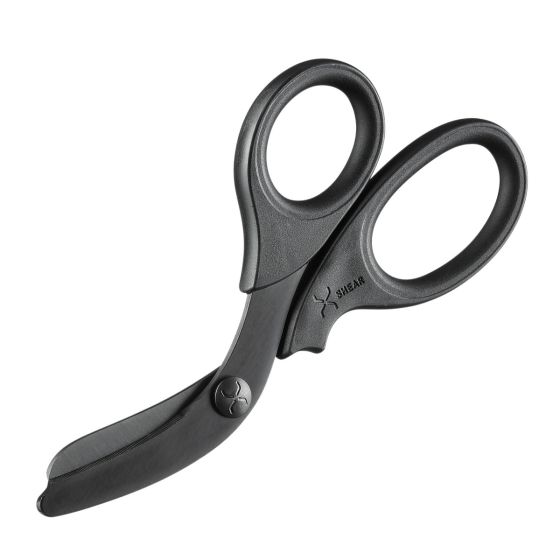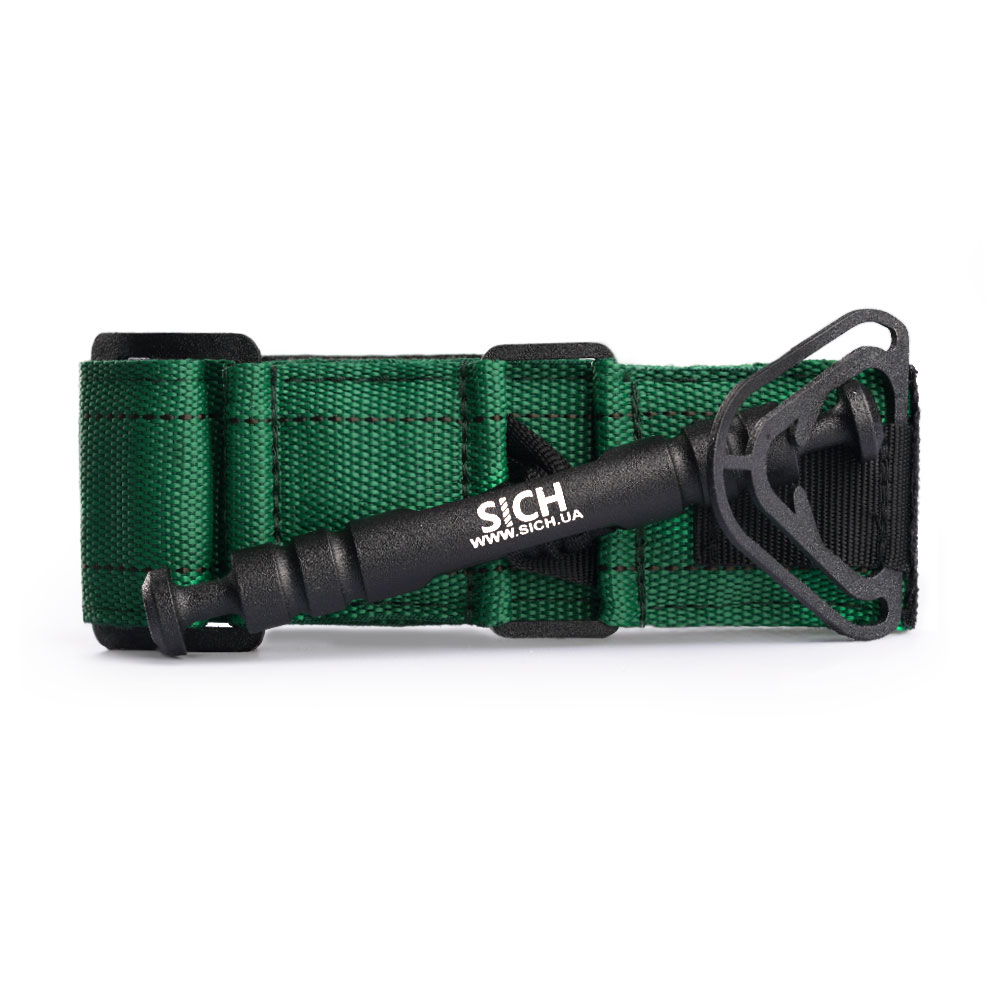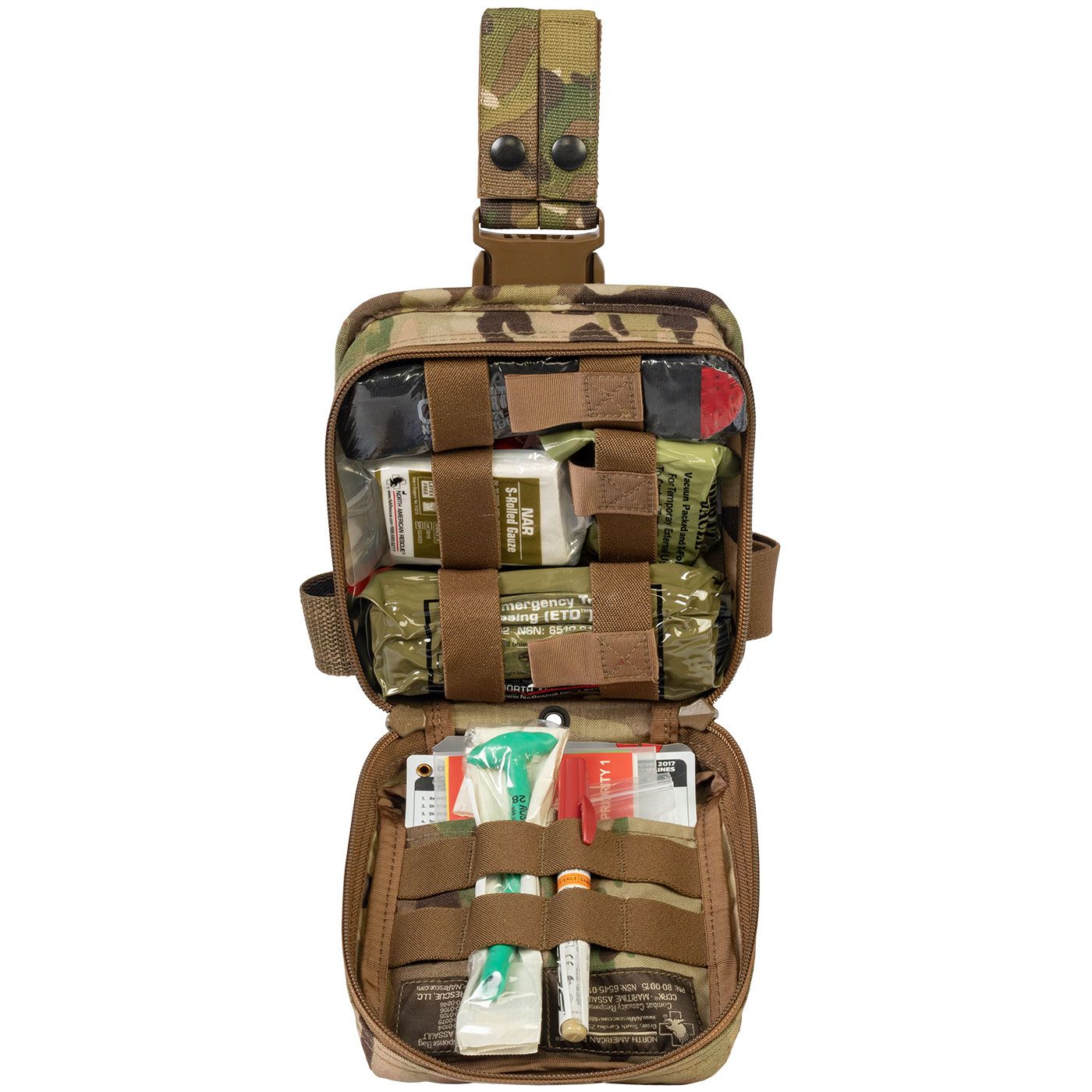Tactical medicine for civilians
Content
- What is tactical medicine on the battlefield, and how did it emerge?
- The difference between first aid and tactical medicine
- Levels of tactical assistance and who they are for
- All Service Members (ASM)
- Combat Lifesaver (CLS)
- Combat Medic/Corpsman (CMC)
- Medical Personnel (MP)
- Why a tactical medicine course for civilians may not yield the expected results
- Should civilians take tactical medicine courses?
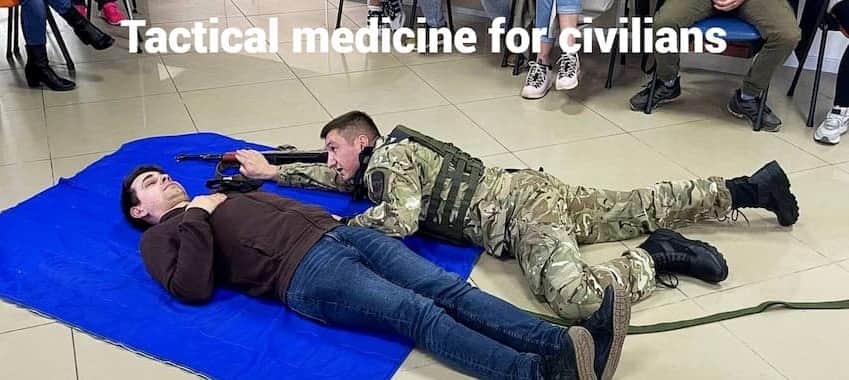
Providing first aid to a victim is crucial, especially in a time of war. In the first few minutes after being injured, a person can lose a significant amount of blood, which can be life-threatening. Shelling complicates the rescue, and transport to a medical facility can take several hours. In the rear, there is also a risk of being seriously injured by shelling.
In view of this, every Ukrainian should know the basics of tactical medicine, which will help save the lives of victims and keep calm in critical situations.
What is tactical medicine on the battlefield, and how did it emerge?
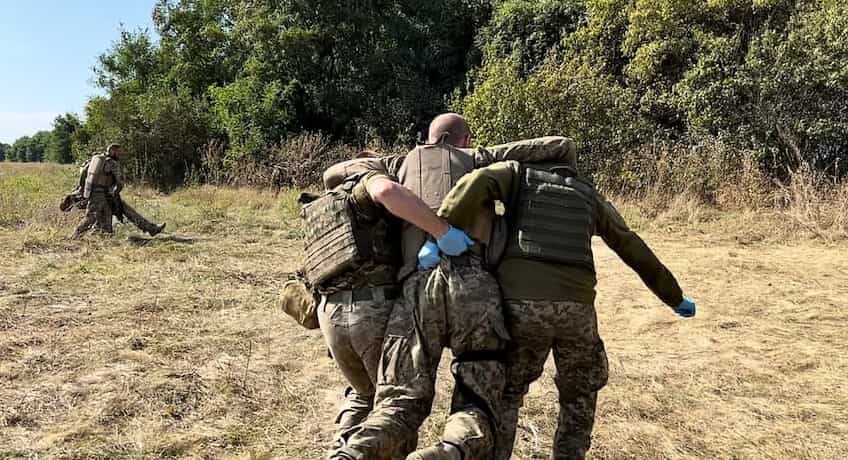
Tactical Combat Casualty Care (TCCC) is a system of recommendations for the provision of pre-hospital care on the battlefield, developed on the basis of practical experience and evidence-based medicine. It is important to note that the TCCC is not a strict protocol, but a set of recommendations that should be followed in the appropriate setting. Although there is no single approved protocol, TCCC has become an international practice used not only in the United States but also in NATO countries.
The TCCC system was developed in response to an urgent problem identified in the 1990s by the US Naval Special Warfare Command (NAVSPECWARCOM). It became apparent that the main cause of death on the battlefield was massive, preventable bleeding. However, due to the lack of effectiveness of existing methods, the mortality rate remained high. This prompted the creation of the TCCC as part of a large-scale study by the intelligence services aimed at developing effective methods of treating trauma in combat.
The idea of improving survivability in combat led to a revision of approaches to medical training for the military. Special operations medical personnel and the United States Uniformed Services University of the Health Sciences (USUHS) initiated a research project that resulted in the TCCC, the first-ever system of recommendations for tactical care of battlefield injuries, in 1996.
In particular, because large blood losses were among the main causes of death in the war, the effectiveness of turnstiles was investigated. Soon, tourniquets became a mandatory element of every soldier's equipment. Since 2005, the Combat Application Tourniquet® (CAT) has been officially recognised as the standard tourniquet of the US Army and is taught in TCCC courses.
The difference between first aid and tactical medicine
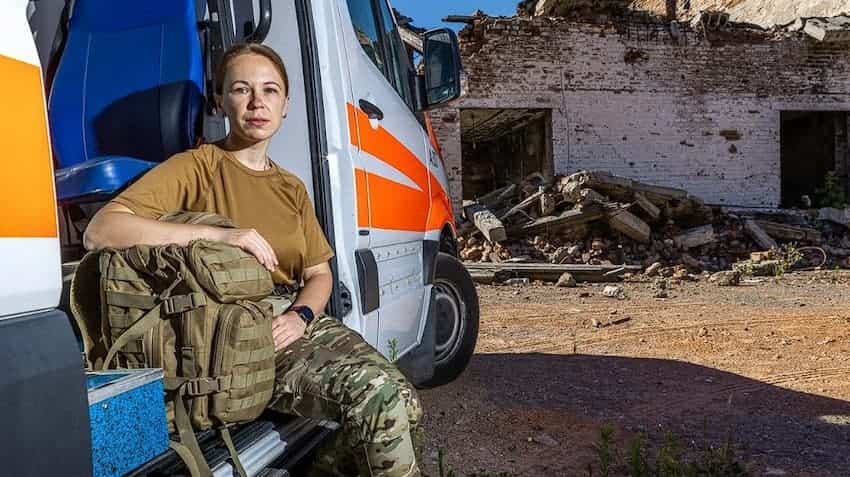
First aid is an emergency medical action that is performed at the scene immediately after an incident. It is usually provided not by medical professionals, but by people who are close to the victim. Such assistance includes cardiopulmonary resuscitation, bleeding control, and assistance with hypothermia, burns, loss of consciousness, and other critical conditions.
Tactical medicine is medical care provided during combat operations, taking into account the complex and dangerous conditions in which it takes place. Unlike civilian situations, where care is provided in hospitals or ambulances, tactical medicine takes into account the threat of shelling, limited access to resources and the need for rapid evacuation.
Since 2014, Ukraine has been actively using the experience and protocols of the Tactical Combat Casualty Care Committee (TCCC) developed by the US Special Operations Command. This committee operates within the US Department of Defense's Defense Health Agency and uses practices based on US military experience dating back to World War II.
Tactical medicine training focuses on the use of personal protective equipment, such as body armour, and the specifics of working in combat and evacuation. Tactical medicine consists of three key stages:
- Help in the "red zone" - directly under fire. This includes applying a tourniquet and moving the victim to a safer place.
- Assistance in the "yellow zone" - on the battlefield or in a shelter zone.
- Assistance in the "green zone" - during evacuation, when the wounded are transported to a medical facility.
Despite the combat environment, the principles of medical care for the military are in many ways similar to civilian ones. For example, the methods of tourniquet application are the same in both cases. The main element of tactical medicine is the MARCH algorithm, which identifies the greatest threats to the wounded and describes the sequence of actions to eliminate them.
Levels of tactical assistance and who they are for
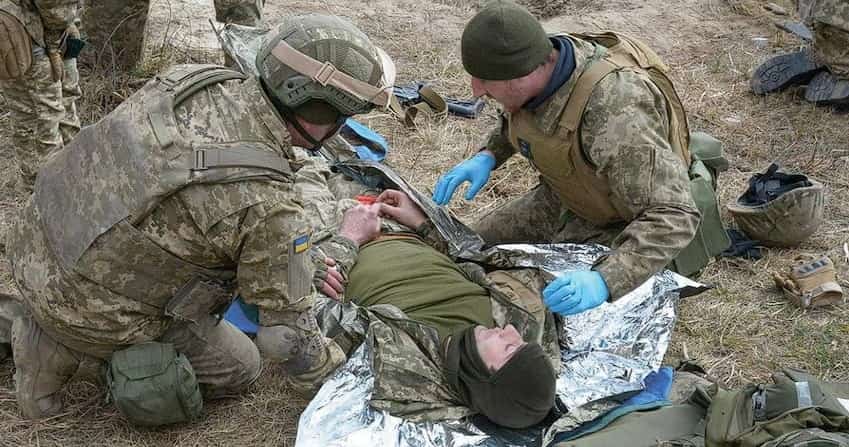
The tactical care levels are designed to ensure effective medical care in a combat environment, taking into account different degrees of risk and capabilities on the battlefield.
They are designed for different categories of people, ranging from those who can provide basic care without special medical training to professional medics working in more controlled environments or during evacuations. This system allows methods and approaches to be adapted to the specific situation and level of threat, ensuring maximum efficiency at each stage of care.
The main goal of all levels of TCCS is to teach how to provide assistance and perform combat missions. Below is a closer look at each level.
All Service Members (ASM)
All Service Members (ASM) is the basic level of tactical care for all military personnel. This stage explains the questions to ask the wounded, as well as the procedures for reporting injuries to military authorities, assisting with their transport, etc. The main goal of ASM is to teach first aid and self-help in the following situations:
- first aid during shelling or other threats to life;
- tactical field care according to the M.A.R.C.H. protocol: massive bleeding, checking breathing, examining the chest, checking for bleeding and tourniquets, maintaining the wounded's normal body temperature;
- relocation and evacuation of the wounded.
Also, at the TCCC level, ASMs are taught to provide assistance in case of eye injuries, head injuries, burns, fractures, as well as to properly assemble and use an individual first aid kit (IFAK), which must be carried by every soldier, or a ship's first aid kit.
Combat Lifesaver (CLS)
Combat Lifesaver (CLS) is an intermediate level of training designed specifically for military personnel that allows them to partially perform the duties of a combat medic or corpsman in situations where qualified medical assistance is not yet available. This training is extremely important, as time is often of the essence on the battlefield in saving the lives of the wounded.
Upon completion of the course, the rescue fighter gains the knowledge and skills necessary to perform a number of critical tasks aimed at helping wounded comrades. The main responsibilities include:
- Returning fire under fire: The rescue soldier must be prepared to return fire to ensure the safety of himself and his fellow soldiers. This may include taking cover or finding safe positions to engage.
- Examination and assistance to the wounded: Using the MARCH and PAWS algorithms, the rescuer examines the wounded and provides them with the necessary care. The M.A.R.C.H. algorithm covers steps such as stopping massive bleeding, checking breathing, examining the chest and monitoring tourniquets. The PAWS secondary assessment focuses on pain management, antibiotic administration, wound care and splinting.
- Triage of the wounded: It is important for the rescuer to be able to assess the condition of the wounded and triage them according to their medical needs. This allows for the prioritisation of those in need of urgent treatment and for effective evacuation.
- Providing protection for the wounded: The combat rescuer is also responsible for protecting the wounded while other rescuers are assessing them. This includes keeping the casualties safe and calm, and being ready to provide further assistance.
- Organisation of evacuation: The rescue fighter must know how to organise the evacuation of the wounded, preparing them for transport and ensuring that they receive all the necessary conditions for quick and safe movement.
Thanks to these skills and knowledge, servicemen who have completed the Combat Lifesaver course can significantly increase the chances of survival of the wounded on the battlefield, reducing the time it takes for them to receive qualified medical care.
Combat Medic/Corpsman (CMC)
Combat Medic/Corpsman (CMC) is a level of training specifically designed for combat medics to provide them with the comprehensive knowledge and skills needed to operate effectively in challenging and dangerous environments. This course teaches first aid, which is critical in a combat environment where speed and accuracy can determine the chances of survival for the wounded.
At this stage of training, the emphasis is on combining theoretical medical knowledge with practical skills, which include:
- First aid: Combat medics are trained in the basic medical procedures required for first aid. This includes bleeding control techniques, airway management, and cardiopulmonary resuscitation.
- Actions under fire: As combat medics often work in dangerous environments, the course includes training on how to operate under fire. It teaches medics to be alert and quick to make decisions, while ensuring their own safety and the safety of the wounded.
- Field conditions: Medics are also trained to work in the field, which involves adapting to the diverse circumstances that may arise during combat operations. This includes learning the basics of field surgery, operating medical equipment and using medical supplies in a non-hazardous environment.
- Organisation and conduct of evacuation: Combat medics learn how to organise and conduct a medical evacuation, which is an important step in the care process. They learn to coordinate between different units, ensuring safety during the evacuation of casualties from the battlefield.
- Tactical evacuation: In addition, medics learn how to provide care before and during a tactical evacuation. This includes assessing the condition of the wounded, determining their needs, and ensuring that they receive appropriate medical care during transport.
- Leadership of other soldiers: The combat medic has a leadership role among other soldiers, which requires not only medical knowledge but also management and communication skills. He or she may choose to work with assistants who have been trained at the CLS or ASM level, creating an effective team to provide care in extreme situations.
Thanks to this comprehensive training, combat medics become indispensable members of the battlefield team, able not only to provide life-saving medical care, but also to coordinate the actions of other soldiers to ensure maximum effectiveness in critical situations.
Medical Personnel (MP)
Medical Personnel (MP) is a specialised course designed exclusively for medical personnel. The curriculum focuses on the in-depth and detailed mastery of various medical techniques that are necessary to provide quality medical care in emergency situations.
During this course, participants learn a wide range of essential skills. The focus is on:
- The use of turnstiles: Participants will learn about the different types of tourniquets, their purpose, effectiveness and methods of application. This is critical because timely application of tourniquets can save a patient's life by stopping massive bleeding.
- Application of haemostatic dressings: The course includes detailed training in the application of haemostatic dressings, which are used to control bleeding and promote wound healing. Participants will learn how to choose the right dressing for the type and location of injury.
- Use of an intraosseous injector: Participants learn how to use an intraosseous injector, which allows them to quickly and effectively inject medications directly into the bone marrow. This may be necessary in cases where venous access is not possible and is critical to ensuring rapid medical care.
- Complex manipulations: The course covers other complex medical procedures that require specialised knowledge and experience. This may include, for example, airway management procedures or the management of cardiovascular emergencies.
Through this comprehensive training, healthcare personnel become more confident in their actions, gaining the knowledge and skills necessary to work effectively under stress and danger. The MP course contributes to the formation of professionals who can provide quality medical care in extreme situations, increasing the chances of survival and rapid recovery of patients.
Why a tactical medicine course for civilians may not yield the expected results
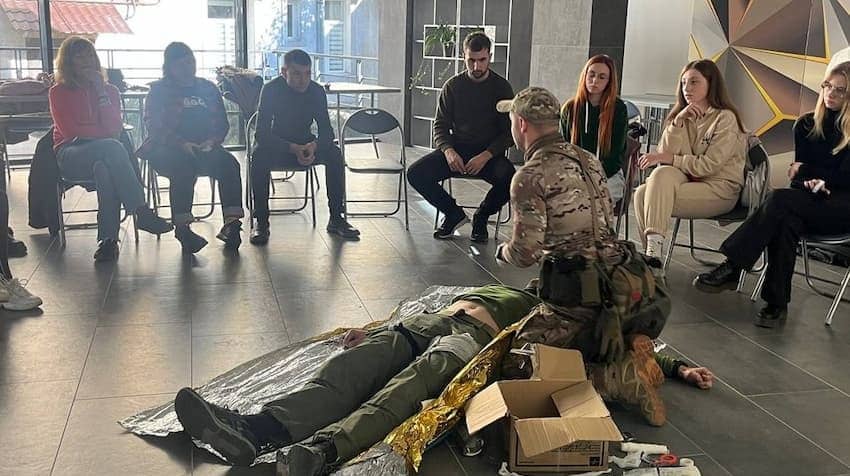
In short, it is impossible to master tactical care without the skills of combat, weaponry and teamwork - all the knowledge that is taught in the army. Although we have mentioned TCC courses, these programmes are not intended for a wide audience and are different from tactical casualty care itself.
Thus, taking one of the proposed TCCS courses and considering oneself ready to rescue the wounded in combat or emergency situations is, unfortunately, a dubious approach. When applying the skills acquired during a tactical first aid course, you need to take into account circumstances that may differ significantly from those in combat. For example, in civilian life, you will not need to fire to help a wounded person.
So, if you want to feel more confident and be prepared for unforeseen situations, you should first take training in standard first aid, which is taught in basic or advanced courses, such as BLS (basic life support) or STB (stopping bleeding) and others.
Should civilians take tactical medicine courses?
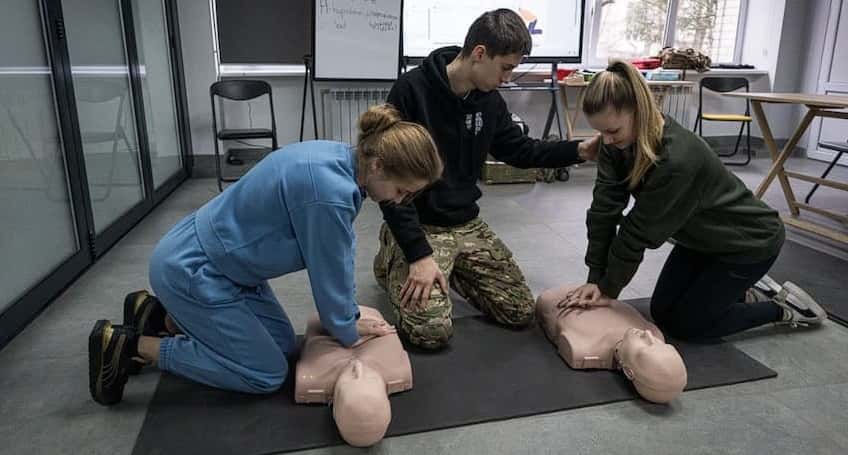
The benefits of the Tactical Medicine / TCCS course are that you will learn how to check breathing, move the wounded to a stable position, stop bleeding, apply tourniquets, and treat burns and fractures. You will also learn what should be included in an individual first aid kit.
Of course, the first aid knowledge gained from any proven course will always be useful. However, it is important to emphasise the difference between civilian first aid courses, such as BLS or STB, and TCCS or similar programmes offered to people without combat training.
These courses (BLS and TCCS) have different target audiences, backgrounds and settings. Even if you encounter a "tactical medicine for civilians" course, whether consciously or not, this may be a half-truth, as you are likely to be taught basic first aid with elements of tactical care.
After completing a few TCCS courses, you will not be ready for real tactical assistance, as this requires combat training and exercises. Despite all the benefits of these courses, they should not be overestimated; you should not imagine yourself as a combat medic or rush heroically to the aid of a person with a weapon.
Remember: tactical combat casualty care is specific care for injuries sustained during military operations, which is provided in conditions of limited resources, in a fire zone or tactical circumstances (after the threat has been neutralised) by military or medical personnel of the Armed Forces of Ukraine.
Therefore, approach your training consciously, use the right timing and choose what you really need now - first aid courses if you remain a civilian, or a tactical combat assistance course if you are already defending your country.
